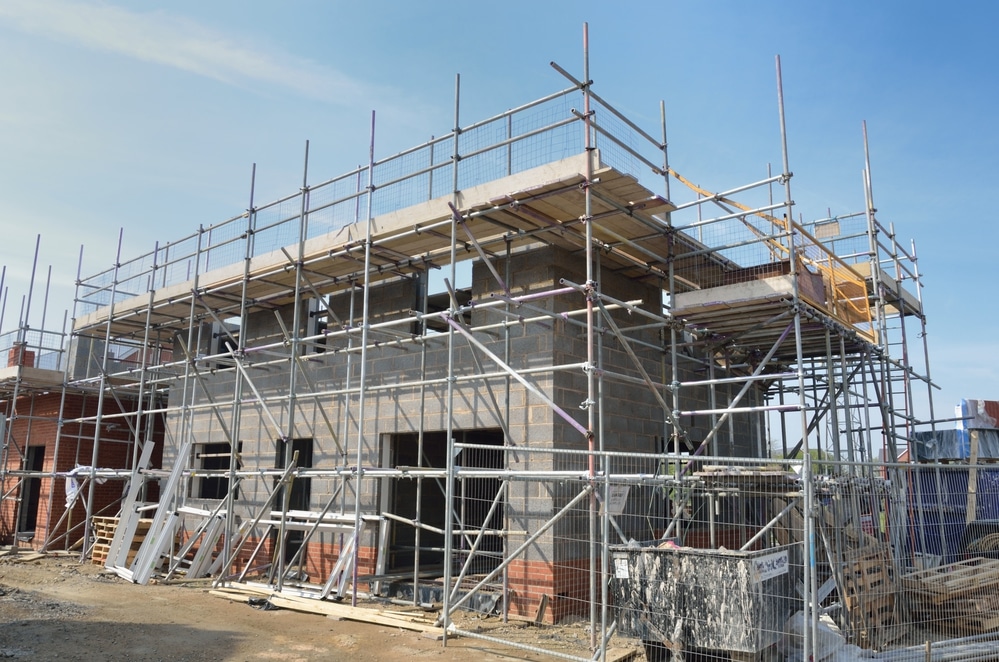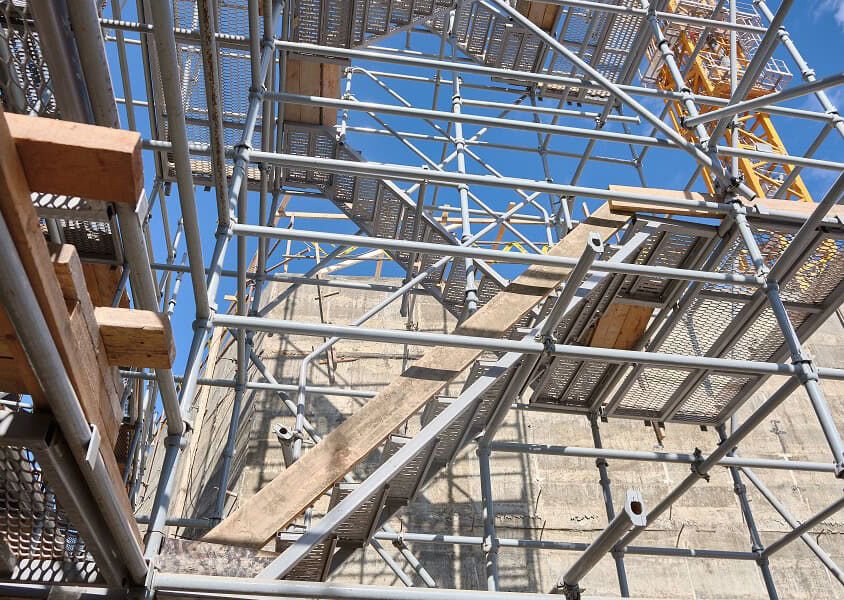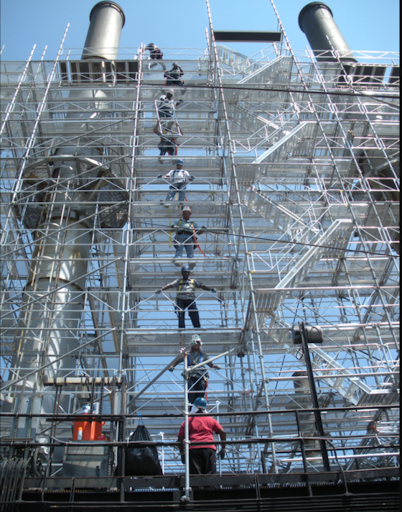Quality Scaffolding Surrey for Both Residential and Commercial Projects
Quality Scaffolding Surrey for Both Residential and Commercial Projects
Blog Article
Checking Out the Various Kinds Of Scaffolding Made Use Of in Building And Construction Jobs
The building and construction market relies greatly on different kinds of scaffolding to satisfy particular project requirements, each offering distinctive advantages and applications. Conventional structure scaffolding provides a tough structure for general jobs, while suspended scaffolding is important for deal with high-rise frameworks. Various other options, such as system and rolling scaffolding, accommodate efficiency and movement, respectively. The cantilever variant verifies invaluable in metropolitan environments where room is constricted. Comprehending the nuances of these scaffolding kinds is essential for optimizing safety and security and performance on building websites, prompting a better exam of their one-of-a-kind attributes and applications.

Conventional Structure Scaffolding
Traditional structure scaffolding is among the most extensively made use of techniques in the building sector because of its robustness and convenience. This system contains straight and vertical structures that are put together to create a secure platform for employees and products. The primary elements consist of vertical posts, straight ledgers, and angled braces, which together supply a solid structure that can sustain considerable lots.
One of the essential benefits of conventional structure scaffolding is its versatility to numerous construction projects, varying from household buildings to big commercial frameworks. The modular layout allows for easy assembly and disassembly, making it effective for both temporary and lasting jobs. In addition, the system can be tailored in elevation and width, suiting various structure layouts and website problems.
Safety and security is extremely important in scaffolding applications, and typical structure systems are geared up with guardrails and toe boards to stop drops and make certain worker protection. Regular assessments and adherence to security regulations are critical in maintaining the stability of the scaffold (Scaffolding). Generally, standard framework scaffolding remains a fundamental selection in the building market, supplying a dependable system for labor and boosting total job performance

Suspended Scaffolding
Suspended scaffolding provides a special service for building projects that call for access to elevated surfaces, specifically in circumstances where standard framework scaffolding may be unwise. This sort of scaffolding is generally put on hold from the roof or upper degrees of a structure, using a system of systems, ropes, and pulley-blocks to produce a functioning space that can be adapted to numerous elevations.
One of the primary benefits of put on hold scaffolding is its versatility. It can be quickly rearranged or decreased to accommodate adjustments in construction demands, making it excellent for tasks such as window setup, frontage work, and upkeep on skyscrapers. In addition, the marginal impact of suspended scaffolding permits better usage of ground area in metropolitan settings, where area is typically minimal.
Safety and security is a crucial factor to consider in making use of suspended scaffolding. Correct rigging and anchoring systems need to be used to guarantee stability and stop mishaps. Operators needs to additionally be educated in the risk-free usage of this tools. In general, put on hold scaffolding gives a reliable and reliable service for accessing hard-to-reach locations in numerous construction circumstances, improving both performance and security on site.
System Scaffolding
System scaffolding, commonly considered a contemporary solution in the scaffolding sector, consists of pre-engineered components that can be swiftly assembled and adapted for different building and construction projects. Scaffolding. This sort of scaffolding is defined by its modular design, which allows for adaptability and efficiency on work sites, fitting architectural needs and various elevations
Generally made from high-strength steel or aluminum, system scaffolding offers boosted longevity and security. The elements consist of vertical blog posts, horizontal journals, and diagonal dental braces, which adjoin safely, ensuring a robust framework. The style often incorporates standardized fittings, streamlining setting up and disassembly processes, therefore decreasing labor time and prices.

Rolling Scaffolding
Rolling scaffolding is a flexible alternative to traditional fixed scaffolding, designed for mobility and simplicity of use on building and construction websites. This sort of scaffolding contains a system supported by frameworks with wheels, allowing workers to easily move it as required. The movement attribute substantially enhances efficiency, as it reduces downtime connected with dismantling and assembling repaired scaffolding.
Usually created from light-weight materials such as aluminum or steel, rolling scaffolding supplies a sturdy yet portable solution for jobs needing regular repositioning - Scaffolding. It is especially helpful in tasks such as painting, drywall setup, and electrical job, where accessibility to various heights and locations is required
Safety and security is extremely important in rolling scaffolding style, with attributes such as securing wheels to avoid unintended motion when in operation, and guardrails to protect workers from drops. In addition, numerous models are flexible in scaffolder competency elevation, accommodating different project demands.
Cantilever Scaffolding

The layout of cantilever scaffolding typically includes utilizing braces or arms secured to a structure or structure, scaffold daily inspection checklist enabling the system to extend outside safely. Security is critical; hence, these scaffolds need to be crafted to hold up against numerous lots and ecological problems. Routine examination and maintenance are important to ensure architectural stability and worker safety.
Cantilever scaffolding is favored for its versatility and efficient use of space, making it a prominent choice in metropolitan settings where space constraints are common. It promotes easier access to high elevations, ultimately contributing to the total performance of building and construction tasks. Just like all scaffolding types, correct training and adherence to security standards are crucial for employees utilizing cantilever scaffolding.
Conclusion
Finally, the varied types of scaffolding utilized in building and construction tasks each offer distinct purposes customized to particular site demands. Conventional framework scaffolding supplies security, while scaffolder cv put on hold scaffolding uses versatility for elevated tasks. System scaffolding assists in fast setting up, and rolling scaffolding improves wheelchair for varying workplace. Cantilever scaffolding efficiently resolves barriers in city setups. Comprehending these scaffolding kinds is necessary for optimizing safety and performance in building, ultimately adding to the effective conclusion of projects.
Traditional structure scaffolding gives a sturdy foundation for general jobs, while suspended scaffolding is important for job on high-rise structures.Moving scaffolding is a flexible alternative to conventional fixed scaffolding, developed for flexibility and simplicity of use on building sites. As with all scaffolding kinds, correct training and adherence to safety and security standards are crucial for workers utilizing cantilever scaffolding.
Conventional framework scaffolding supplies security, while put on hold scaffolding uses versatility for raised tasks. System scaffolding promotes fast setting up, and rolling scaffolding boosts wheelchair for differing work atmospheres.
Report this page